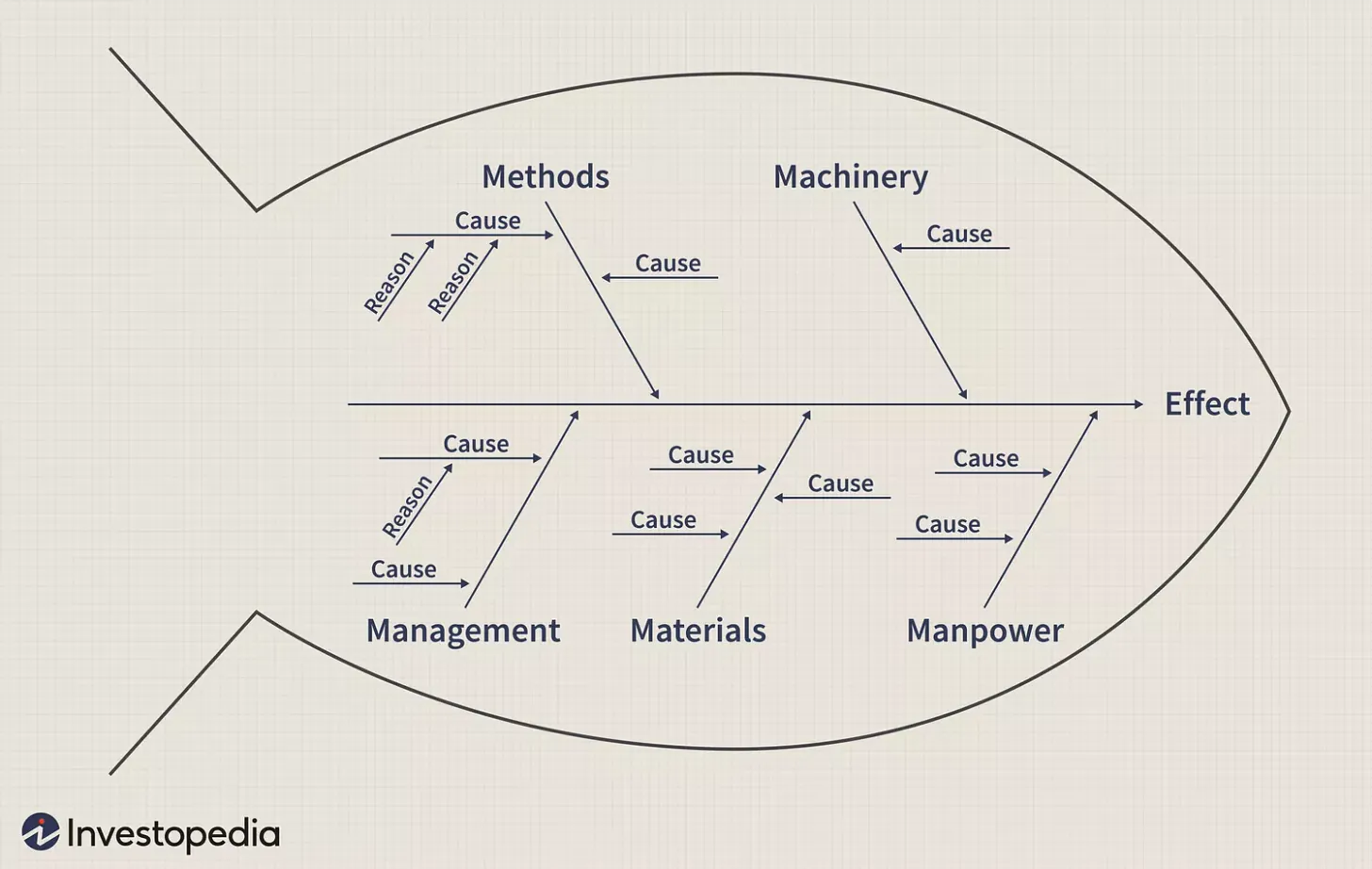The Ishikawa diagram, also known as a Fishbone diagram due to its visual resemblance to a fish's skeleton, is a tool used in quality management to identify and analyze potential causes contributing to a particular effect or problem.
Developed by Kaoru Ishikawa, this diagram organizes causes into categories, making it easier to understand the root causes of an issue.
Imagine a scenario in a manufacturing company where there's a decline in product quality. The Fishbone diagram would visually represent this issue:
- Effect: Poor Product Quality
- Categories of Causes (commonly referred to as the "bones" of the fish):
- Manpower: Potential causes related to the workforce, like inadequate training or lack of skills.
- Methods: Causes related to the processes and methodologies employed in production.
- Materials: Issues related to raw materials, their quality, or suitability for production.
- Machines: Problems stemming from equipment, machinery, or technology used in production.
- Environment: Factors related to the working environment, such as temperature, humidity, or workspace layout.
Want to learn more about productivity, focus, and achieving flow state? Subscribe to short & concise Psychology newsletter, Psych for more insights and tips.
What do I need to know?
Key points about the Ishikawa/Fishbone diagram:
- Visual representation: It provides a clear, visual representation of potential causes contributing to a specific problem, aiding in a structured analysis of complex issues.
- Categorization of causes: By categorizing causes into groups like manpower, methods, materials, machines, and environment (often referred to as the 5Ms and 1E), it helps in systematically identifying potential root causes.
- Problem-solving tool: It's an effective tool for problem-solving and quality improvement initiatives within organizations, allowing teams to brainstorm and identify potential causes collaboratively.
